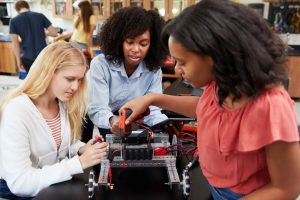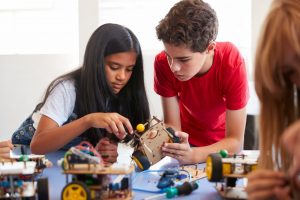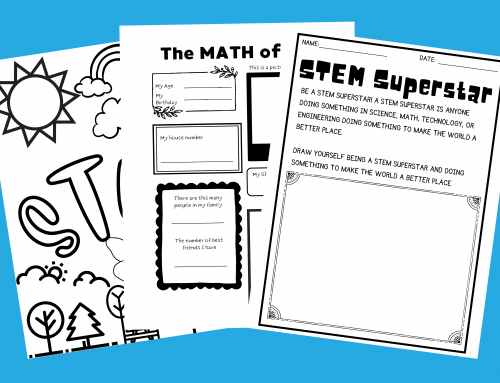Northeastern University has defined culturally responsive teaching, at its most basic level, as “a pedagogy that recognizes the importance of including students’ cultural references in all aspects of learning.” It recognizes that traditional methods of teaching and their materials do not embrace diverse experiences and backgrounds. The goal of culturally responsive teaching is to decolonize this education so that all students can experience it equitably.
Culturally responsive teaching is important for every teacher, regardless of their location, grade level, or school’s demographics. Of course, there are different ways to approach this topic with different students. That is why teachers differentiate. I expect you will do so as you always do. That does not, however, impact the content you teach. Culturally responsive teaching is important for ALL students, regardless of race, and is extremely important for diversifying a future STEM workforce.
Learn About Your Personal Bias
As a STEM educator, you can’t practice culturally responsive teaching until you know what your own biases are. Everyone has personal biases (don’t feel guilty, we’re all growing!) which can transcend race and gender. Learning what they are is a great way to bring mindfulness into your STEM teaching strategies.
Harvard University has an implicit bias test that has its flaws but is the best place to start. Once you get your results, you can research how to address them and consider how these ideas may be impacting the students in your classroom. We all want to be the best educator for our students and this self-awareness is key for inclusivity in the STEM classroom.
Start Simple: Windows and Mirrors
The first place to start is to ensure that any student who enters your classroom has both windows and mirrors. A window is a place where they can explore a culture or person outside of their own experiences and learn from that. A mirror is a place where they can see themselves and their own culture represented and relate to that experience. In STEM, this means adequately representing all cultural backgrounds in your posters on your wall, the names of people in your word problems, and in the history of science that you teach.

If you teach by PowerPoint, do all the images of students learning look kind of the same? Try replacing some of those images with young people of color! Google has recently fixed its algorithm so that when you google scientists, you now get a diverse set of images. This is an easy place to pull from (while also citing of course). Again, this is important regardless of your school’s demographics, location, or grade level. All students need BOTH windows AND mirrors.
Decolonize Your Curriculum
There’s a lot of storytelling in STEM—from the history of technological advances to breakthrough discoveries that shaped the world. Unfortunately, the stories often put a certain person at the center and it’s important to consider how the location and identify of that hero is reflected in the story told. For students to see themselves in the roles of STEM heroes, they need to be able to envision themselves as the lead actor of these stories. If they can see it, then they can be inspired to do it.

This means thinking about who is telling the story in your classroom. Consider researching your textbook. Feature scientists of color outside of black history month like Henrietta Lacks. Talk about how George Washington Carver was more than just peanut butter. Chat openly about the integration of space exploration. Talk about Percy Julian, the first African American to receive a PhD in Chemistry. Watch Neil deGrasse Tyson speak about his experience as a black student telling others he hoped to be an astrophysicist. Talk about Guillermo González Camarena, José M. Hernández, Idelisa Bonnelly, and Sabrina Gonzalez Paterski. Haven’t heard of these amazing STEM trailblazers before this article? Revel in the process that you can learn along with your students – rethink your teaching, to change the world.
I know this can feel like a lot at times. How can you, just one person, make a serious impact? The answer is by taking it one step at a time. Pick ONE actionable thing to do right now, today, this week, or this month. Then continue challenging yourself to be better. Remember to hold yourself to the same growth mindset with which you hold your students. In the words of Angela Davis, “you have to act as if it were possible to radically transform the world. And you have to do it all the time.” You’ve got this!







Leave A Comment